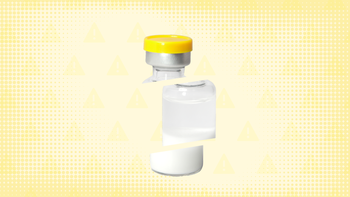
Comparing Osteoporosis Treatments: 9 Differences Between Boniva, Fosamax, and Prolia
Key takeaways:
Boniva (ibandronate), Fosamax (alendronate), and Prolia (denosumab) are effective osteoporosis medications. Boniva and Fosamax are available as oral medications, and Boniva is also available as an intravenous injection. Prolia is only available as a subcutaneous injection.
Fosamax is often a first-choice medication for osteoporosis. But when comparing Boniva versus Fosamax, Boniva doesn’t have to be taken as often. And when comparing Prolia versus Fosamax, Prolia may be preferred for people who are at very high risk for fracture.
The most common side effects of Boniva and Fosamax are gastrointestinal symptoms like indigestion, nausea, and diarrhea. These side effects aren’t seen with Prolia, but it has other risks such as infections.
Access savings on related medications
Table of contents

Osteoporosis is a condition that happens when your bones become less dense and weaker, which puts you at a greater risk of fractures. Medications are often recommended for men and postmenopausal women diagnosed with osteoporosis. This is because research shows that they reduce fracture risk compared to not using medications at all.
Three common medications that treat osteoporosis are Fosamax (alendronate), Boniva (ibandronate), and Prolia (denosumab). And while there are several other medications that can also treat osteoporosis, we’ll focus here on these three options.
Below, we’ll discuss nine differences between Boniva versus Fosamax versus Prolia. We’ll also cover what they have in common and which might be the better osteoporosis treatment for you.
Search and compare options
Boniva, the brand-name form of ibandronate, is no longer available on the U.S. market. However, many people still refer to ibandronate as Boniva because it's easier to say. We’ll refer to ibandronate as Boniva throughout this piece.
Take our quiz: Osteoporosis medications
1. Fosamax, Boniva, and Prolia are FDA approved for different uses
Boniva and Fosamax are FDA approved to prevent and treat osteoporosis in postmenopausal women. Fosamax is FDA approved for several other uses as well, including the treatment of:
Osteoporosis in men
Osteoporosis caused by steroids
Paget's disease, a bone disorder
Prolia is approved for people that are at high risk for fracture due to the following conditions:
Osteoporosis (in men and postmenopausal women)
Osteoporosis caused by steroids
Bone loss in men receiving androgen deprivation therapy for prostate cancer
Bone loss in women receiving aromatase inhibitors for breast cancer
2. Fosamax and Boniva work differently compared to Prolia
Both Fosamax and Boniva belong to a class of medications called bisphosphonates.
Comparing osteoporosis medications: Read about all of the factors that will help you choose the right osteoporosis medication for you.
Lifestyle changes: If you’re looking for alternatives to medication, check out the lifestyle tweaks that can help you strengthen your bones.
Exercising with osteoporosis: Exercise is essential to strengthening your bones, but choosing the right exercises can help you get the most out of your workout.
Bisphosphonates work by limiting bone breakdown. This is when your body breaks down old bone (a process called resorption) and replaces it with new bone. Resorption is a good thing. But when there’s too much resorption and not enough new bone being produced, your bones become weaker and osteoporosis can happen.
Prolia is another osteoporosis medication, but it’s not a bisphosphonate. It’s in a class of medications called monoclonal antibodies. More specifically, it’s a RANK ligand inhibitor, or RANKL inhibitor.
RANKL is a protein that certain cells need to break down bone. Prolia blocks RANKL from attaching to its receptors (chemical binding sites). By blocking RANKL from working, Prolia prevents the breakdown of bones — and strengthens them.
3. Fosamax, Boniva, and Prolia come in different forms
Fosamax is available in oral forms only: a traditional tablet, an oral liquid, and a dissolvable tablet called Binosto. It’s also combined with vitamin D in a brand-name product called Fosamax Plus D.
Boniva is available as an oral tablet and an intravenous (IV) injection. Prolia is available as a subcutaneous injection (SQ) only. SQ injections are administered under the skin.
4. Fosamax is often the preferred treatment for osteoporosis, but some may benefit from Boniva or Prolia
In general, bisphosphonates (like Boniva and Fosamax) are first-choice medications for osteoporosis in men and postmenopausal women. They work well, can be taken orally, and they’re generally inexpensive.
When comparing Boniva versus Fosamax, Fosamax is usually recommended over Boniva for prevention of nonvertebral fractures. This refers to fractures that don’t involve the spine, such as wrist or hip fractures. This is because there’s mixed results on whether Boniva is good at preventing nonvertebral fractures. But Fosamax, along with other bisphosphonates risedronate (Actonel, Atelvia) and zoledronic acid (Reclast), are known to be effective at preventing vertebral and nonvertebral fractures. Still, one benefit of taking Boniva tablets is that they’re only taken once a month, whereas Fosamax is taken daily or weekly. And what’s more IV Boniva is used even less frequently — once every 3 months.
Prolia is usually an alternative option for osteoporosis in men and postmenopausal women who can’t take bisphosphonates, such as if reduced kidney function or problems with your esophagus. However, Prolia is preferred over Fosamax or Boniva in postmenopausal women who are at very high risk for fractures — such as those who’ve had multiple fractures in the past or who have evidence of severe bone loss.
But Prolia comes with a disadvantage: Research shows that the risk of fracture increases within 6 months after stopping Prolia. So if you stop taking it, you’ll likely need to start using another osteoporosis medication like a bisphosphonate.
5. Boniva and Prolia don’t have to be taken as frequently as Fosamax
Fosamax tablets can be taken once a day or once a week for osteoporosis prevention and treatment. But you only have to take Boniva tablets once a month. Boniva delivered via IV is only used once every 3 months. It may be useful if Fosamax or oral Boniva causes you stomach problems, such as nausea, diarrhea, and indigestion. But it has to be given by a healthcare professional, so it requires you to visit your prescriber’s office or other healthcare setting.
Prolia is administered even less frequently: once every 6 months. Like IV Boniva, it has to be given by a healthcare professional, so it requires a visit to your prescriber’s office.
6. Bisphosphonates like Boniva and Fosamax have to be taken in a specific way
If you take Boniva or Fosamax pills, there are a few tips to follow:
Take these medications before your first meal, drink, or other medications of the day. This helps your body absorb Fosamax. You should wait at least 30 minutes after taking Fosamax and 60 minutes after taking Boniva to consume any food, beverage, or medication.
Drink at least 6 to 8 ounces of plain water when taking Boniva or Fosamax. This helps prevent the pills from getting stuck in your throat.
Don’t lie down for at least 30 minutes after taking Fosamax, or 1 hour after taking Boniva. This reduces your risk of gastrointestinal (GI) side effects.
7. You may need to avoid Fosamax and Boniva if you have severe kidney problems, but Prolia could still be an option
If you have severe chronic kidney disease, Fosamax and Boniva may not be the best options for you. Your prescriber will order lab tests to help determine how well your kidneys are functioning. If you're in the later stages of kidney disease, Fosamax and Boniva may not be recommended.
There’s no specific recommendations for avoiding Prolia if you have kidney problems. But people with severe kidney disease or who receive dialysis are at a greater risk for hypocalcemia (low calcium levels) while taking Prolia.
8. Boniva, Fosamax, and Prolia have different side effects
In general, bisphosphonates like Boniva and Fosamax are well-tolerated. The most common side effects are mild and GI-related, like indigestion, nausea, and diarrhea or constipation. This is because bisphosphonates can irritate your esophagus and stomach — which is why it’s important to follow the directions discussed above for taking them. Prolia isn’t known to commonly cause GI side effects.
Bisphosphonates and Prolia can also cause:
Muscle and bone pain
Osteonecrosis of the jaw, a rare condition that leads to break down of the jaw bone
Atypical femur (thigh bone) fractures
Hypocalcemia, which may require calcium and potentially vitamin D supplementation.
Infusion reactions (with IV Boniva and SQ Prolia)
Prolia can also cause infections, like skin and urinary tract infections. In fact, this is one reason Prolia is part of a Risk Evaluation and Mitigation Strategies (REMS) program. The FDA requires REMs programs for some medications. The purpose of the Prolia REMS program is to make sure prescribers and people taking Prolia are aware of the serious risks.
It’s uncommon for osteoporosis medications to be used during pregnancy, but some pregnant women with bone disorders may need treatment. While there isn’t much research on using these medications in pregnancy, it’s possible that they can cause harm to an unborn baby if taken during pregnancy. So they shouldn’t be used if you’re pregnant. And for Prolia specifically, you should use contraception while receiving Prolia and for at least 5 months after your last dose.
9. Prolia is a brand-name medication but Boniva and Fosamax are available as generics
Fosamax and Boniva are available as lower-cost generic medications, with Fosamax as tablets and oral liquid and Boniva as tablets and IV injection.
Fosamax Plus D tablets and Binosto dissolvable tablets are alendronate-containing products that are brand only. Prolia is also brand-name only. And so is Jubbonti (denosumab-bbdz), a biosimilar to Prolia that is FDA approved for the same health conditions.
What are alternatives to Prolia, Fosamax, and Boniva?
Many other medications are available to treat osteoporosis. Depending on your individual situation, you may require something different than Boniva, Fosamax, or Prolia.
Forteo and Tymlos
These medications are available as IV treatments. Both Forteo (teriparatide) and Tymlos (abaloparatide) help stimulate new bone growth. They’re usually only used for 2 years before switching over to another osteoporosis medication, such as Fosamax. They may be a good option for people who can’t take pills and who have a very high fracture risk. In fact, the most recent osteoporosis guidelines from the American College of Physicians recommends teriparatide or Evenity (romosozumab) over Prolia for women with osteoporosis and a very high risk for fracture.
Evenity
Evenity is a monoclonal antibody that helps you build new bone and reduce breakdown of existing bone. It may be recommended in postmenopausal women with osteoporosis who have a high risk of fractures. It usually needs to be taken for 12 months, followed by another osteoporosis treatment, such as Fosamax.
However, romosozumab isn’t recommended for people who are at risk of heart problems and stroke.
Evista
Evista (raloxifene) acts like estrogen in your bones, which helps prevent bone breakdown. It’s another treatment option for postmenopausal women with osteoporosis and may have an added benefit of reducing the risk of breast cancer.
Calcitonin
Calcitonin is available as an IV medication (Miacalcin) and nasal spray. It prevents bone breakdown and lowers calcium levels. It can be used to treat osteoporosis in postmenopausal women. It’s not a first-choice option, and it’s only considered when other therapies can’t be used.
How to save
There are several ways to save on Fosamax, Boniva, and Prolia. With a free GoodRx discount, you can receive the following savings:
Generic Fosamax at certain pharmacies may be as low as $9.44 for a 1-month supply (four tablets)
Generic Boniva may be as low as $18.79 for a 3-month supply (three tablets)
Prolia is available only as a brand-name medication. But there might still be ways to lower the cost:
Save with patient assistance programs. If you’re uninsured or underinsured and you meet certain income requirements, you may be eligible for Prolia’s patient assistance program, which offers Prolia free of cost.
Save with a copay savings card. If you have commercial insurance and meet eligibility requirements, Prolia may be as little as $25 per dose with a savings card from the manufacturer.
Frequently asked questions
Boniva was discontinued in 2023. However, generic ibandronate is still available as an oral tablet and IV injection.
For most people, medications are the best option for treating osteoporosis. Lifestyle changes — like performing weight bearing exercises and getting sufficient calcium and vitamin D — can be an alternative to medication. But in general, lifestyle changes alone aren’t as effective as medications alone. Not treating osteoporosis increases your risk of fractures, which can significantly affect your quality of life and ability to function.
The bottom line
A group of medications called bisphosphonates are usually first-choice medications for osteoporosis. Examples include Fosamax (alendronate) and Boniva (ibandronate). When comparing Boniva versus Fosamax, Fosamax is usually preferred. These medications have similar side effects, such as indigestion, nausea, and diarrhea.
Another osteoporosis medication called Prolia (denosumab) may also be an option for osteoporosis treatment. For postmenopausal women at very high risk of fractures, or people who can’t tolerate a bisphosphonate, it may be preferred over Fosamax or Boniva. It’s not known to have gastrointestinal side effects like Fosamax or Boniva, but it has other risks such as infections.
Why trust our experts?


References
Amgen Inc. (n.d.). Prolia risk evaluation and mitigation strategy.
Amgen Inc. (2024). Prolia - denosumab injection [package insert].
Apotex Corp. (2023). Ibandronate sodium - ibandronate sodium injection [package insert].
Aurobindo Pharma Limited. (2024). Alendronate sodium - alendronate sodium tablet [package insert].
Aurobindo Pharma Limited. (2024). Ibandronate sodium - ibandronate sodium tablet, film coated [package insert].
Camacho, P. M., et al. (2020). American Association of Clinical Endocrinologists/American College of Endocrinology clinical practice guidelines for the diagnosis and treatment of postmenopausal osteoporosis–2020 update. Endocrine Practice.
Federal Register. (2023). Hoffmann-La Roche, Inc., et al.; Withdrawal of approval of two new drug applications.
National Kidney Foundation. (n.d.). Dialysis.
Qaseem, A., et al. (2023). Pharmacologic treatment of primary osteoporosis or low bone mass to prevent fractures in adults: A living clinical guideline from the American College of Physicians. Annals of Internal Medicine.
Shoback, D., et al. (2020). Pharmacological management of osteoporosis in postmenopausal women: An Endocrine Society guideline update. The Journal of Clinical Endocrinology and Metabolism.
Sokal, A., et al. (2016). OP0101 bisphosphonates during pregnancy: A prospective study. Annals of Rheumatic Diseases.
Tay, W. L., et al. (2022). Discontinuing denosumab: Can it be done safely? A review of the literature. Endocrinology and Metabolism.
U.S. Food and Drug Administration. (2024). FDA approves first interchangeable biosimilars to Prolia and Xgeva to treat certain types of osteoporosis and prevent bone events in cancer.

























